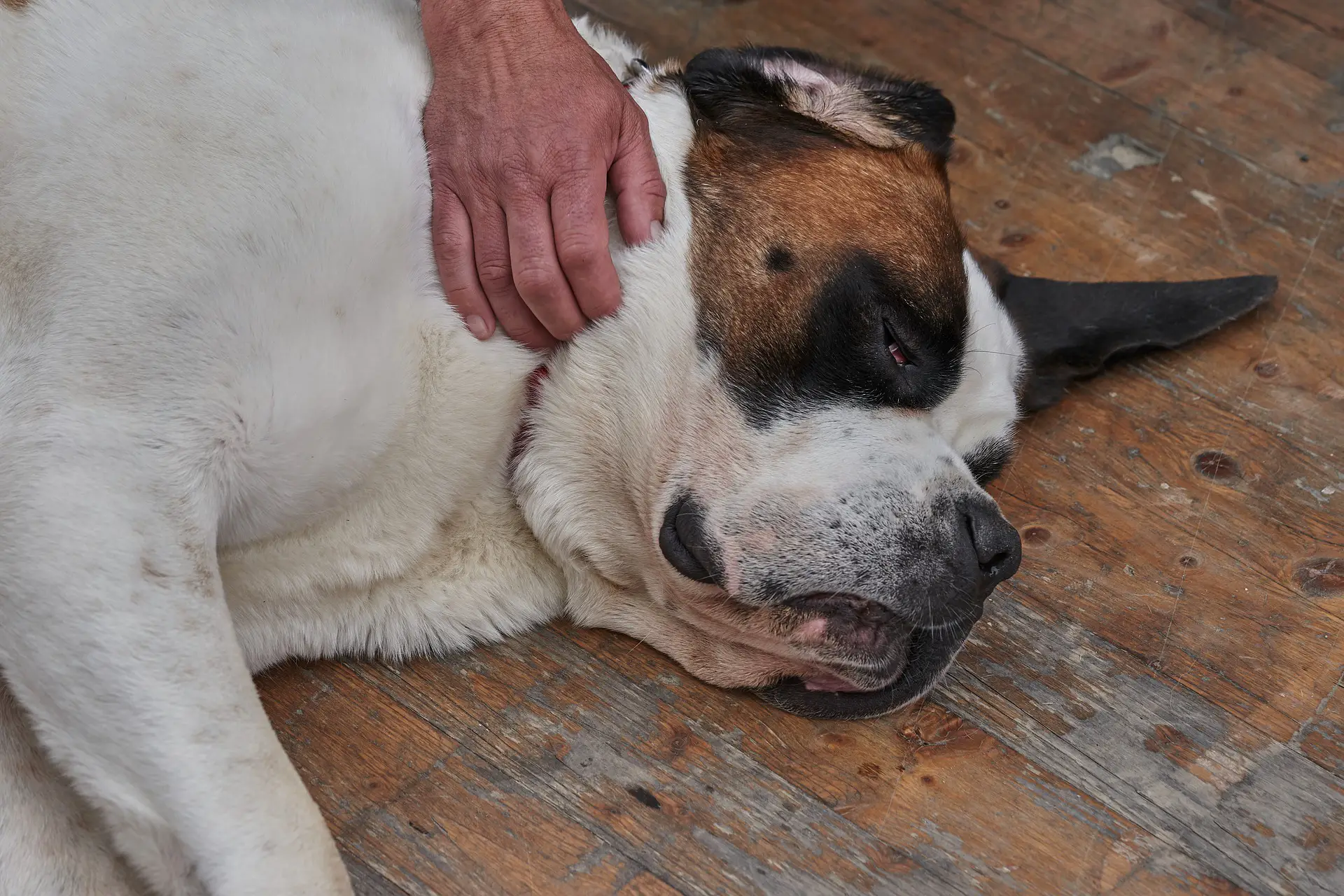Children of the 90s won’t remember Beethoven as a world-famous classical composer but rather as a big dog with a big heart from the iconic children’s movie of the same name. Beethoven weighed in at 185 pounds and was always ready to jump to action when mischief was afoot. He drooled and cuddled his way into his onscreen family’s hearts and caused a boom in the popularity of St. Bernard during the 90s. In this article, we will be looking at the pros and cons of St. Bernards.
On average, male St. Bernard dogs reach 33-inches and females 30-inches. Females are also a bit lighter as they weigh roughly 135 pounds and males are around 40 pounds heavier. They have massive heads and long fluffy tails that hang down. Their colors are also quite standard: reddish-brown backs with white legs and darker markings around the eyes and ears. A St. Bernard has droopy ears that give it an ultra-lovable look.
They are big balls of fluff that love to be loved but are you aware of the implications when bringing one into your life? Read below what to expect when getting a St. Bernard.
Pros of Owning a St. Bernard
1. Kind and Loving Disposition
St. Bernards are working dogs and were trained to help weary travelers reach the St. Bernard hospice in the western Alps. A pro of St. Bernards is that their friendly temperament was ideal to welcome people or put them at ease during search and rescue missions.
Steven King’s horror “Cujo” tried to paint this fluffy giant in a bad light but even during production, these dogs refused to adhere to the grim personality assigned to them. Rather, they were too pleased to be surrounded by people on set and were later replaced by Rottweilers to depict more aggressive scenes. This is a true testament to their loving nature.
2. Very Smart and Highly Trainable
As worker dogs, they are an intelligent breed. They were trained in search and rescue missions in the Alps and had to retrieve lost pilgrims in the unforgiving mountainous surroundings. Today, they are often used in carting and weight pulling events and entered into dog shows.
As a pet, they are obedient with a small stubborn streak, a pro of owning a St. Bernard. If they are socialized from a young age there should be no problem integrating them with other pets or introducing them to strangers. They are not an aggressive breed so training is easy.
Cons of Owning a St. Bernard
1. So Much Drool!
St. Bernards have large square heads and their giant muzzles are always covered in drool, a disadvantage of owning St. Bernards. Their thick fur around their neck might prove to be hard to clean with the constant presence of moisture. Their eyes are also quite watery, and you will need to clean their faces more than anything.
They have jowls, meaning the flesh around their cheeks and throat is loose. It is for their protection but it is a major source of slobber and drool. This is also intensified if the dog is feeling hot, so it is important to not let your dog overheat.
2. Big Dogs Need a Big Space
St. Bernard is a giant breed and not suitable for apartment living. Even though they do not need as much exercise as other large breeds, they still need lots of space to roam. They are outdoorsy dogs that love to explore nature and get their paws dirty. A large home with a big yard is best suited for them as they need space to move freely without bumping into things on accident.
Their affectionate nature also means they will like to be close to you. You will need to have enough space for you and your dog wherever you walk or sit. Not to mention the space they need in the car to join you on your weekend adventures.
3. Health Problems
Large breeds tend to have lots of growth-related health problems, a con of St. Bernards. With St. Bernards, hip and elbow dysplasia is very common and can become very uncomfortable and painful later in their lives. In many cases, they need surgery to alleviate the pain. Other skeletal problems include bone cancer and Osteochondritis Dissecans.
Their eyes are also prone to problems including lower eyelid drooping. Ectropion can cause severe irritation and lead to infections in extreme cases. Dogs will need topical ointment, great hygiene, and perhaps surgery if it cannot be managed.
4. Big Puppies are Hard to Control
They only live about 8-10 years and take around 3 years to reach full maturity. This means their puppy phase lasts long and during this time they are very bouncy and bubbly. They are prone to jumping and barking and are easily excitable.
When they head into their adolescence they can become quite stubborn. They love to act silly and will push your boundaries constantly. It is very important to approach them with patience and let them know you are in control. They respond to positive reinforcement but during this time you will need to be extra firm. Because of their large size, it is important to have a well-behaved dog as they can become intimidating and destructive if not trained well.
5. Heavy Shedders
They have thick course coats with very fluffy long tails. There are longer and shorter coats but shedding is the same story for both. These thick coats shed a great deal and your house will be covered in dander. Twice a year the shedding increases but be ready to vacuum year-round. You cannot trim your St. Bernard’s hair so you will need to make peace with their hair-fall early on.
A major con of St. Bernards is that these dogs need to be brushed at least once every day or two. They are large so giving them a bath might not be an easy feat either. It helps that they are quite docile as adults and tolerate being bathed, but their sheer size might pose an inconvenience.
I hope that this article on pros and cons of St. Bernards was helpful. If you are interested, visit the Dog Category!

